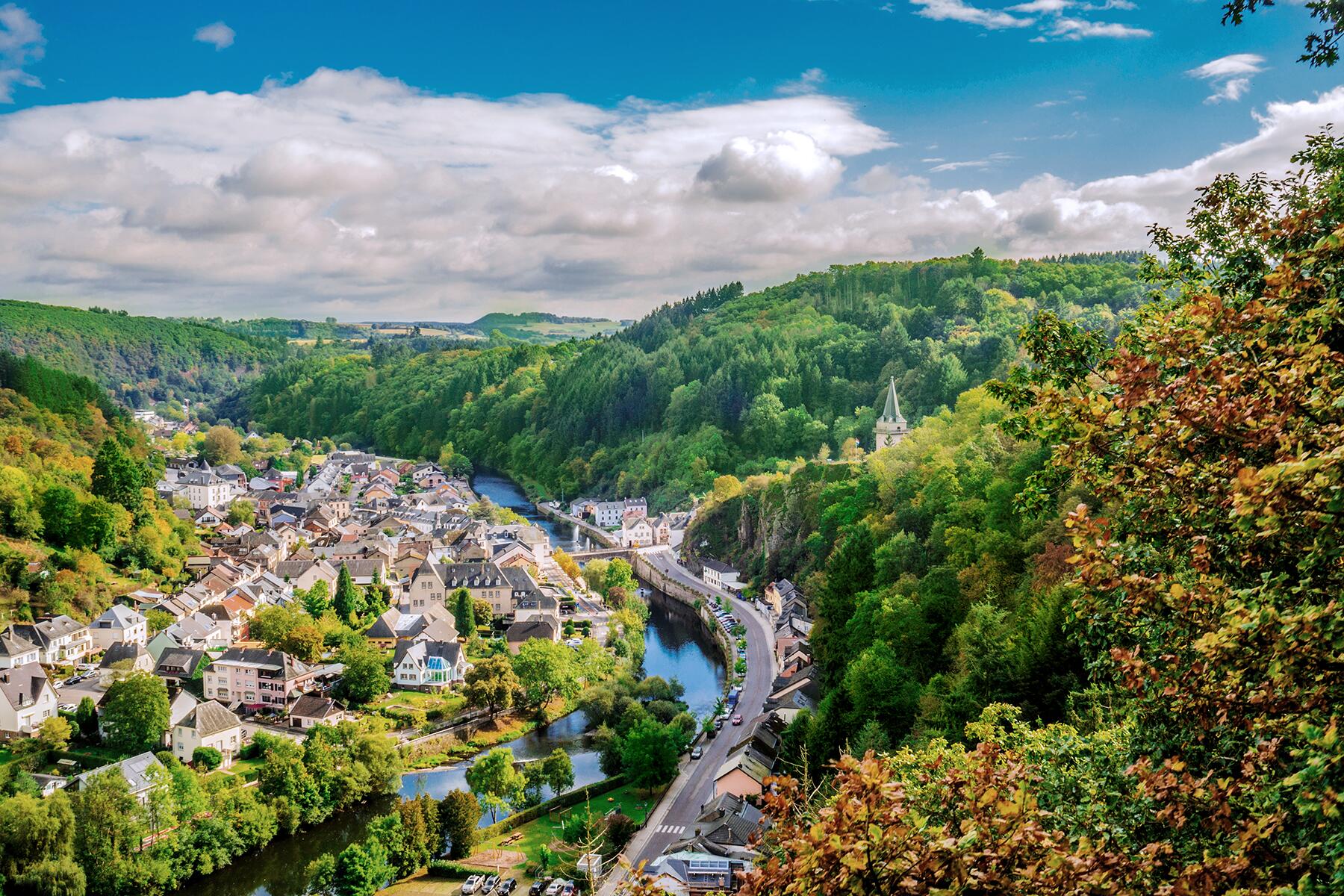The Luxembourg Ardennes
The Luxembourg Ardennes
Vast, rolling green hills and dense fir forests alternate in Luxembourg's northern highlands, the southeast corner of the rocky, wooded Ardennes plateau. Higher and harsher than the duchy's southern Bon Pays (Good Country), with bitter winters and barren soil, it is relatively isolated and inaccessible; indeed, even in the 1940s, no one expected the Germans to attempt an attack across such rough and uneven terrain. They did, of course, twice. The second led to one of the most vicious conflicts in World War II, the Battle of the Ardennes, or the Battle of the Bulge. Throughout its history, the region has been the hunting grounds of kings and emperors, Celts, Romans, and Gauls; shaggy deer and great, bristling wild boar still occasionally charge across a forest road. Castles punctuate its...
Read MoreVast, rolling green hills and dense fir forests alternate in Luxembourg's northern highlands, the southeast corner of the rocky, wooded Ardennes plateau. Higher and harsher than the duchy's southern Bon Pays (Good Country), with bitter winters and barren soil, it is relatively isolated and inaccessible; indeed, even in the 1940s, no one expected the Germans to attempt an attack across such rough and uneven terrain. They did, of course, twice. The second led to one of the most vicious conflicts in World War II, the Battle of the Ardennes, or the Battle of the Bulge. Throughout its history, the region has been the hunting grounds of kings and emperors, Celts, Romans, and Gauls; shaggy deer and great, bristling wild boar still occasionally charge across a forest road. Castles punctuate its hills and valleys, and rocky rivers and streams pour off its slopes, making this a popular vacation area for northern Europeans seeking wilderness and medieval history.






